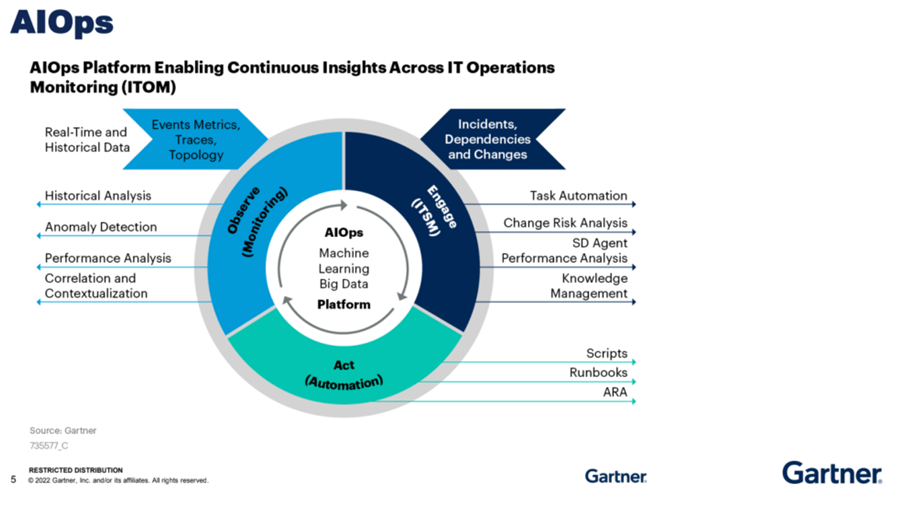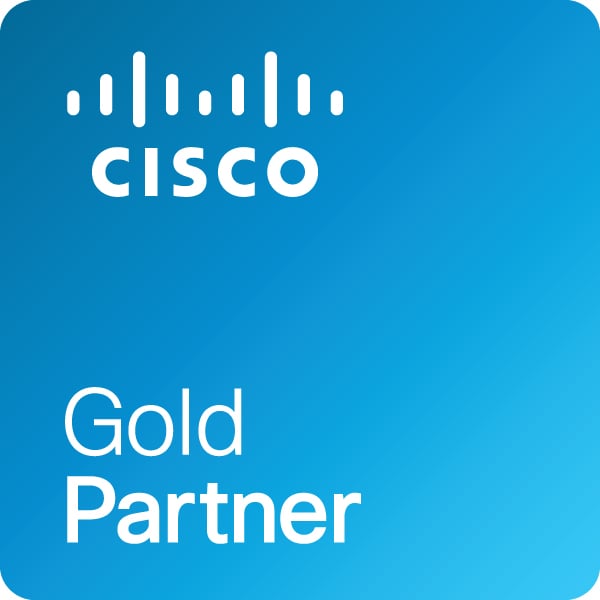Do you have a process in place to ensure HIPAA compliance?
Healthcare providers everywhere want to provide the smoothest patient experience possible and deliver the best medical results they can. But in their...
3 min read
Pradeep Patil : May 30, 2023 10:00:00 AM

AIOps is a valuable tool that businesses of all sizes are using to differentiate themselves from their competitors. By collecting and managing data effectively, businesses can gain insight into customer behavior, market trends, cost optimization, and other important areas. With AI-powered analytics, companies can make faster, more informed decisions that give them a competitive advantage. By leveraging the power of AIOps, businesses can stay ahead of their competition and truly stand out in their industry.
AIOps relies on big data and machine learning to provide ongoing insight into the health of systems and to take actions to maintain or restore their health.

As shown in the picture above, Gartner looks at AIOps to deliver on three major areas across the ecosystem of the organization. This trio works towards the completeness of the operation’s vision.
Traditionally, hardware vendors provided a single monitoring tool to provide visibility into the health of an organization's infrastructure. As technology advanced, we saw an increase in vendor tools that provided siloed visibility of systems. The same pattern can be seen with cloud providers today, as organizations use a mix of public and private clouds, traditional data centers, SaaS, and microservices. This has created a need for a consolidated view and increased the challenge of visibility.
AIOps platforms provide the solution to these challenges and enable continuous digital transformation by fostering visibility and action. These platforms are expected to replace or integrate isolated monitoring platforms and can handle the metric flow from cloud-specific monitoring systems, whether through a push or pull mechanism. The use of standards such as open telemetry helps to standardize metrics, logs, and traces for more efficient consolidation.
Let us explore the potential use cases based on the focus areas of the AIOps:
As the IT environment grows, it becomes increasingly difficult for humans to keep track of and quickly identify the relevant events generated by the monitoring system across various components. Machine learning-powered platforms can quickly analyze and find patterns in the event stream, reducing the volume of non-actionable events by 90%.
Event correlation involves finding new relationships in the data collected through a system and performing causal analysis based on the topology or discovered relationships. AI-powered analysis can identify new relationships between applications and infrastructure components upstream and downstream, which helps to prioritize the impact efficiently.
An AIOps platform provides a central dashboard for data collected from various streams, serving as a central location for IT ops teams to find the dependencies and health of the environment. It also helps to triage systems faster, reducing MTTRs.
Using the ML capabilities, event, and metrics streams available in an AIOps platform, it is possible to predict usage trends and appropriately alert to take preventative action before outages occur, which helps to stabilize the environment.
In the past, ITOps teams were able to predict the performance of their systems and set thresholds to detect anomalies. However, as systems have become more complex, it has become more difficult to predict thresholds and detect anomalies. Intelligent thresholds use historical data to determine the current usage patterns of a system and identify anomalies.
Discovery of the relationship between IT configuration items and identifying patterns of butterflies flapping their wings over the Pacific helps correlate the potential causes of the event, which is impacting the business. This takes away the guesswork from the triaging and helps organizations standardize triaging an issue. It also helps reduce the dependency on expert technicians to detect and predict the causes.
In earlier days of automation, the focus was on the automation of tasks. Today complex orchestrations and decision-making are possible through the system. It helps create an automated remediation action plan ensuring the L1 team can run such steps without damage and potentially trigger the remediation based on the confidence achieved over time. This helps reduce MTTR dramatically and increases the availability of the system for end users.
Zones can help the organization plan for the vision beyond the daily operations and achieve the consolidated vision through the deployment of tool stacks and supporting the transition.
References:

Healthcare providers everywhere want to provide the smoothest patient experience possible and deliver the best medical results they can. But in their...

1 min read
Healthcare organizations increasingly dealing with advanced threats 2016 has seen a spike in reported ransomware attacks in the healthcare industry....

VMware Horizon 6 and AlwaysOn Point of Care Solution Healthcare IT leaders face many challenges as they seek to deliver secure, reliable mobile...